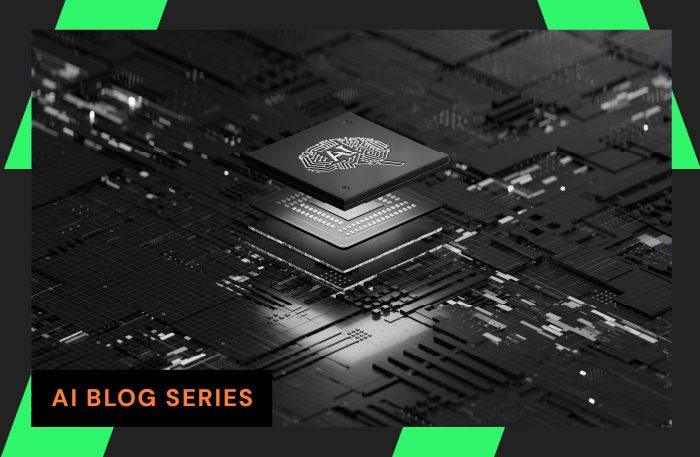Contents
Using a single consolidated multi-function platform can significantly improve operational effectiveness.
Evaluating and selecting a unified management and monitoring system that checks all the boxes can feel like a tall order. We’ve made a few lists to help examine your motivations and decide your priorities when considering tool consolidation.
- 8 reasons NetOps keep multi-tool status quo going
- 7 challenges facing multi-tool network monitoring
- 6 ways a unified network monitoring platform can empower NetOps
Streamlining your operations monitoring and management through one platform gives you a cleaner workflow and more efficient mean time to resolution (MTTR).
Simplify your network monitoring and response by using a consolidated monitoring and management platform like LiveNX.
Achieving Operational Excellence Through Tool Consolidation
The need to prioritize Operational Excellence to achieve top-class network visibility and performance is more important than ever.
In today’s digitally transformed world, modern enterprises have become inextricably reliant on their IT networks to conduct everyday business. And as the business world progressively turns to the cloud for its software and infrastructure needs, enterprise networks grow more complicated with new challenges to manage, like virtualization, WAN edge, and hybrid clouds.
Those companies that rely on poorly performing networks will see their IT costs increase, risks inflate, and end-user experience weaken as their networks fail to keep up with business. Instead, by adopting a Next-generation Unified Network Monitoring Platform, IT teams can tackle major constraints that prevent end-to-end network visibility.
One of those constraints is Tool Sprawl, the over subscription of performance monitoring tools to manage multi-fabric, multi-environment enterprise networks. According to estimates, nearly 25 percent of large enterprises rely on 8 to 25 network performance monitoring (NPM) tools to visualize and manage their systems.
But implementing so many tools is an inefficient practice. The real game-changing NPM tool, according to Zeus Kerravala, Founder and Principal Analyst at ZK Research, would be “a single, vendor-agnostic platform that can provide a comprehensive and contextual understanding of device performance and security across the entire network stack.”
In that light, NetOps departments seeking Operational Excellence aim for maximum end-to-end network visibility and real-time efficiency over all aspects and resources of their enterprise networks, regardless of the complexity of configuration. Yet, it’s a pursuit hampered by unsophisticated operational practices, opaque operational silos, and reliance on a large set of disparate monitoring tools to visualize and analyze interacting network environments.
If network administrators can tap into the abundance of available information already produced by their networks and combine it with a sophisticated NPM toolset, then by leveraging AI and big data techniques, insights can be gained about the entire network that were previously invisible to simple monitoring tools and practices.
It’s an evolutionary approach to Network Performance Management—NetOps teams can immediately shift from playing firefighter and instead respond proactively to network performance issues and bottlenecks.
What Is Network Monitoring Software Tool Consolidation?
Consolidating network monitoring tools is an industry wide response to the inefficient status quo where NetOps teams unnecessarily deploy multiple monitoring tools to manage their networks, especially when better solutions exist. Network Performance Monitoring and Diagnostic (NPMD) software vendors have responded by releasing Next-generation Unified Network Monitoring Platforms that fold device polling, flow-based technology and packet-based technology into one tool.
Why does the multi-tool network monitoring status quo remain?
Many NPM leaders over the past years have consolidated technologies through innovation, acquisition, and software redesign to bring end-to-end visibility solutions to market. But for some NetOps the multi-tool status quo persists in their operations for many reasons:
- NetOps teams are caught in firefighter mode, unable to shift gears, design and implement better solutions to manage their networks
- Operational silos exist that create inefficiencies between departmental initiatives, such as resource overlap and duplicate costs
- Operational practices are unsophisticated, slow, manual and task-based rather than embracing automation, continuous delivery, and continuous improvement
- Reliance on products without integration capabilities hampers a complete visualization and analysis of network data
- Reliance on vendor-specific tools limits NetOps teams to specific environments, practices, and capabilities
- Reliance on freeware monitoring tools that lack key features and functions
- Reliance on open-source monitoring tools with limited support and further development and integration requirements
- Lack of insight into the game-changing nature of full network visibility and how visibility not only impacts network performance, but also business insights
Ultimately, NetOps maintaining a multi-tool approach is costly. A LiveAction survey of network professionals found that 42% spend excessive hours troubleshooting across the entire network, while 38% are so bogged down they can’t even proactively identify network performance issues as they come up.
Multi-tool network monitoring approach faces growing challenges
Conditions grow even more distressing for NetOps teams that fail to respond to the fundamental changes happening to enterprise networks today. Networking practices and configurations are undergoing key shifts that impact the environments that NPM tools monitor, and NetOps departments must reconsider the materiality and effectiveness of their current toolset in light of these changes.
- Cloud migration has fundamentally changed the flow of network traffic, with much of it outside the firewall, and API traffic accounting for nearly 84%
- Increasing virtualization and east-west traffic within data centers compounds data-capture challenges
- Encryption within the data center has been greatly prioritized
- Network instrumentation becomes the key to new network monitoring models in order to cope with the exponential growth and adoption of new applications
- End-user expectations for network services continues to elevate, demanding greater network performance
- A growing appreciation of network data as a single source of truth across all domains will elevate the network as a critical component of businesses
- IT and business alignment will focuses the applicability of network data analysis into business insights
A Unified Network Monitoring Platform overcomes network blindspots
A centralized network performance monitoring solution that provides a complete, historical and real-time picture of the network across packet, flow, SNMP and other network data, overcomes blindspots created by the rapid changes in enterprise networks today. Like LiveAction’s LiveNX, which can deliver broad visualizations for high-level monitoring and detailed packet analysis, can empower NetOps teams to:
- No longer pivot from one monitoring tool to another, a single dashboard eliminates complexity and simplifies workflow.
- Reap continuous traffic and network insights across the entire network without blindspots in their on-premise, cloud, and virtual environments.
- Guarantee next level network service assurance.
- Discover, investigate and repair network problems quickly.
- Uncover a window into customer behavior and help drive innovation and enable more efficient use of network capacity.
- Proactively identify advanced threats to improve security.
How to Achieve Network Management Tool Consolidation Effectively
Consolidating tools is not an overnight process. While end-to-end visibility has become a reality with Next-gen NPM tools, consolidation should be tempered with due diligence about vendor capabilities and capacity planning that accounts for current and future business uses.
A NetOps’ toolbox could contain many tools spanning multiple functional domains, such as network mappers, traffic monitors, troubleshooting monitors, root-cause and event correlation analyzers, configuration and change management tools, app performance monitors, and capacity management tools. Not to mention, as network administrators have been trending toward home-growing their own monitoring and automation tools, the unknown number of custom networking tools that support an organization’s infrastructure could be significant.
Enterprises considering consolidating their monitoring tools into a Unified Network Monitoring Platforms can look to the following best practices to guide them along their journey.
Assess the current toolset
NetOps teams reliant on multiple tools may have already invited shadow IT into their workflows, opening networks up to security, performance, and redundancy concerns. Conduct a complete inventory of current tools. With a tools inventory, teams will expose overlapping, outdated, and hidden functionality that can be consolidated into a unified solution.
Replace point products with platform solutions
End-to-end visibility requires data sharing integration. Avoid vendor tools that don’t offer advanced data integration and that effectively prevent full access to your network data. Instead favor vendors that promote cross-vendor ecosystems. Leading vendors will offer tools that consolidate data and offer historic, flow, device, and packet data integration.
Consolidate tool sets across IT domains
Because network monitoring capacity serves many domains, consider the functional requirements that can be consolidated across multiple IT groups. How can improving the organization’s NetOps improve performance of AppOps, DevOps, or SecOps?
Leverage automation, AI and machine learning
As enterprise networks grow more complex and their traffic volume increases, a greater sophistication must be applied to combat the commensurate network congestion and security threats. NetOps must adopt AIOps and automation to proactively combat hostile agents, and network traffic bottlenecks in real-time.
Establish formal best practices for managing the toolset
Operational silos create barriers of disunity that unified monitoring systems can help to alleviate. Without professional cooperation between operating groups, though, the advantages of these tools could be lost. Best practices for managing the toolset must be established and prioritized within and between IT groups in order to ensure that the new holistic approach to network management is understood and maximized.
Adopt a single source of truth practice
Adopting a single source of truth, or SSOT, practice is critical for enterprises to operate at a higher level that is supported by insights drawn on the totality of their data, such as customer, sales, marketing, conversion, and network data. Although SSOT is not a tool in itself, unified monitoring tools operate on its principle of aggregating network data to run real-time and historic analysis on and achieve a holistic view. Further, these analyses can combine with other internal and external data sets to uncover greater business insights.
Use Cases for Consolidating Networking Monitoring Solutions
End-to-end network visibility solutions provide network administrators accurate and complete views of their networks ensuring that bottlenecks and trouble-spots are quickly detected and remedied. Some common NetOps use cases that plague enterprise networks are easily overcome by a unified NPM tool.
- QoS Readiness — Protect the network’s overall Quality of Service, and ensure that VoIP, video, and critical applications continue to deliver an acceptable level of service to users.
- Remote Locations — Enterprise networks today can span tens if not hundreds of remote branches, data centers, and edge devices. With a single, integrated visibility solution capable of monitoring both local and remote locations, organizations can track their entire network from virtually any location, even mobile.
- Multi-segment Analysis — Because now enterprises rely on business-critical applications, business performance is closely tied to app performance and network performance. Network administrators are challenged to keep their networks running at peak capacity and minimal latency, so an integrated system that automates information gathering and analysis can greatly minimize troubleshooting times for NetOps teams.
- Bandwidth Utilization — Network utilization is the key metric for NetOps teams. Understanding the volume and composition of network traffic helps NetOps troubleshoot bandwidth hogs, map peak traffic times, uncover malware, create networking benchmarks and more. A unified monitoring platform with flow and deep packet inspection capabilities, along with historical and real-time analysis, offers ultimate bandwidth visibility at the most granular level and empowers NetOps teams to fully understand their network utilization.
- Ongoing Historical Analysis — Contextual awareness based on historical analysis of network data is the next level of network monitoring. Complicating that task is the increased amount of data that comes from infrastructure complexity. In order to create contextual awareness, apps, data stores, websites, networking devices, firewalls, mobile and more must fit together like a precise jigsaw puzzle. Afterwards, NetOps can quickly garner insight from terabytes of data and uncover network and app usage patterns, investigate security attacks, and discover bottlenecks throughout the network.
- Fault Management — Fault management can be automated by sophisticated network monitoring platforms, automatically dispatching restorative scripts that greatly reduce the time it takes to detect and remedy network faults.
- Capacity Management — To ensure their networks continue to provide an acceptable QoS, NetOps teams must periodically re-evaluate the capacity of their networks. A unified NPM tool, with historical visibility, greatly informs capacity planners who then can combine business requirements, costs, and network traffic data to determine current and future needs.
Enterprise Case Studies
Online Financial Institution Deploys LiveNX to Manage QoS in Real-time
After choosing Cisco Prime and LiveAction’s LiveNX solution, a large online bank engaged LiveAction in deploying and assisting their Day 0 and 1 planning, and Day 2+ optimizations.
LiveNX was able to provide significant insight for Day 0 baseline and planning by revealing exactly what was running on their network and more specifically how the network was being utilized. During the Day 1 build and deploy phase, by leveraging LiveNX, the bank was able to scale to meet over 10,000 devices, discover and rectify intermittent asymmetric VoIP routing issues, optimize traffic flow from branches to data centers, and verify WAN application traffic steering. In Day 2+, thanks to the LiveNX deployment, the bank’s NetOps team was empowered to monitor and maintain an impeccable Quality of Service in their network easily from LiveNX’s patented visual analytics and dashboard.
Multinational Shipping Company Implements LiveNX Managing Global Network of 8,000+ Routing Nodes
A U.S. based multinational courier service, with more than half a million team members, in over 200 countries, all connected in their work through the enterprise WAN, required a solution that would protect against the massive complexity of their network.
The shipping company chose Cisco’s IWAN solution for its SD-WAN prowess and LiveNX’s performance monitoring capabilities to deploy to its global network of over 8,000 routers. The result enabled the enterprises network operation center (NOC) total visibility and control from a single-pane-of-glass. With the ability to see end-to-end connections across their global network, they can target bottlenecks and drill down into the component parts at the connection and interface level, and troubleshoot with ease.
FAQ/Checklist
What is a Unified Network Monitoring and Diagnostic Tool?
Unified Network Monitoring and Diagnostics Tools, or Unified Network Monitoring Performance (UNMP) tool, aggregates device information and network traffic data to make visible the entire network and create visualizations and analysis to assist network managers in troubleshooting and optimizing network performance.
What is monitored with an UNMP like LiveNX?
LiveNX offers deep packet inspection and traffic flow monitoring across multi-vendor, multi-domain, and multi-cloud networks, and creates historical context based on the analysis of collected data. Every device, flow, and packet is visualized in an organized and comprehensive dashboard.
Why is tool consolidation an important pillar for Operational Excellence?
Tool glut has become a major problem for enterprises. To gain greater insight into the mosaic of their network, organizations rely on more tools to visualize and discover insight in the data that is already present. This fractionalization of tools introduces redundancy, inefficiencies, and potential blind spots that UNMP tools overcome.
How can I seamlessly consolidate tools?
First, understand the needs of the network, and the uses of the NetOps’ current toolset. Second, understand the future capacity requirements of the network. Third, contact a LiveAction representative to review your needs and suggest the appropriate solution with the least amount of downtime, if any at all.
What size organizations can benefit from NMP tools?
For small, medium, or enterprise businesses, network complexity is the ultimate determiner for their NMP needs. For instance, small businesses with remote systems can greatly benefit from NMP tools that can monitor systems at a distance. Likewise, enterprises with thousands of devices attached to their networks are candidates that can also greatly benefit in time and money from NMP tools.
Where can I learn more about the technicals of LiveActions performance solutions, LiveNX, Omnipeek, and LiveSP?
- Learn More Technicals: Frequently Asked Questions
Download Your Free LiveNX Trial
About LiveAction®
LiveAction provides end-to-end visibility of network and application performance from a single pane of glass. We provide enterprises with confidence that the network is meeting business objectives, full network visibility for better decisions, and reduced cost to operate the network.




